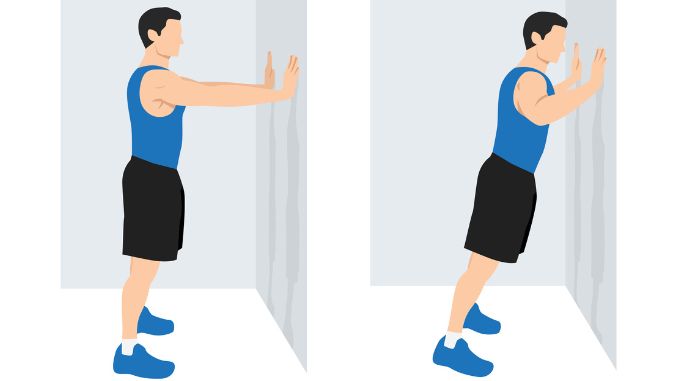Falls among the elderly are a significant concern, as they can lead to serious injuries and reduced quality of life. Understanding the most common causes of falls in the elderly can help in prevention efforts. Here are some of the most prevalent reasons:
1. Environmental Hazards
Falls often occur due to hazards in the home or community. Common risks include:
- Wet or slippery floors
- Loose rugs or mats
- Inadequate lighting
- Obstructed or cluttered walkways
2. Muscle Weakness
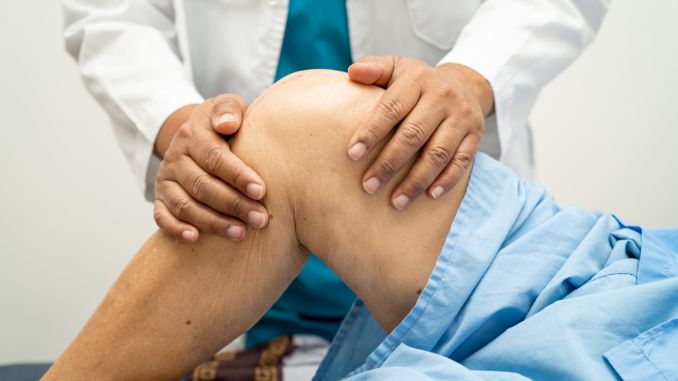
Age-related muscle loss, known as sarcopenia, reduces strength and balance, increasing the likelihood of falls.
3. Balance Issues
Balance problems are prevalent among older adults. Conditions like vestibular disorders or even just age-related changes can lead to instability.
4. Vision Impairments
Poor eyesight can significantly impact an elderly person’s ability to navigate their surroundings. Common issues include:
- Cataracts
- Glaucoma
- Macular degeneration
5. Medication Side Effects
Some medications can cause dizziness, drowsiness, or confusion, all of which can lead to falls. Regularly reviewing medications with a healthcare provider can help identify and manage side effects that contribute to fall risks.
6. Chronic Health Conditions
Conditions like arthritis, diabetes, or heart disease can affect mobility and balance, increasing the likelihood of falls.
7. Fear of Falling
Ironically, the fear of falling can lead to less activity, resulting in decreased strength and balance, which in turn raises the risk of falls.
One notable expert in the field of fall prevention is Dr. Mary Tinetti, a geriatrician and professor at Yale University. She emphasizes the importance of comprehensive assessments to identify individual risk factors for falls. Dr. Tinetti advocates for a multifaceted approach, including strength training, balance exercises, and medication reviews. Her research shows that tailoring prevention strategies to the specific needs of older adults can significantly reduce fall rates and improve overall health outcomes.
7 Simple Exercises to Avoid Falls
Staying active can strengthen muscles, improve balance, and reduce the risk of falls. Here are seven simple exercises that can be easily incorporated into a daily routine:
1. Chair Stand
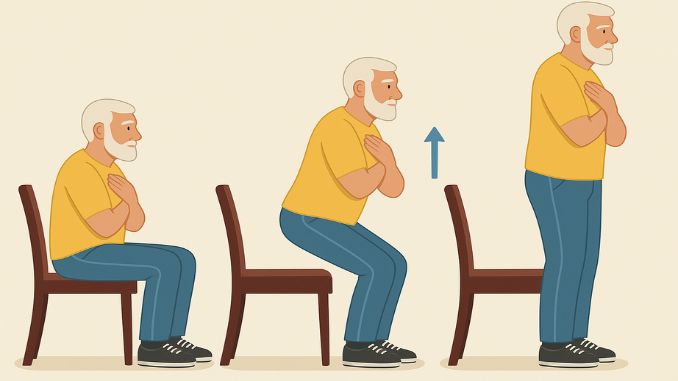
Benefits: Strengthens leg muscles.
- Begin in an upright sitting position on a chair with your knees bent and feet flat on the floor. Cross your arms in front of your chest. Engage your core muscles. Slowly stand up without using your hands, then sit back down to return to the starting position. Repeat the movement with 10 repetitions.
2. Heel-to-Toe Walk
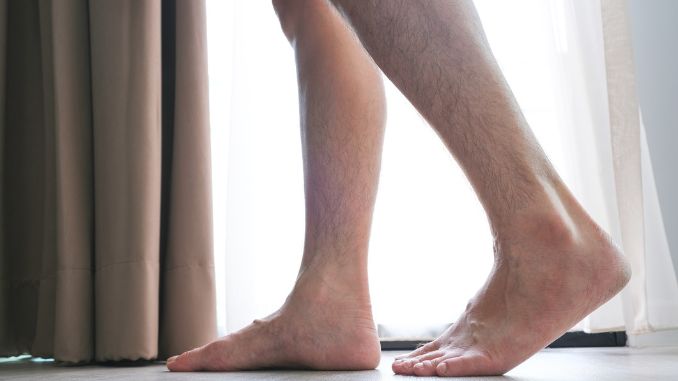
Benefits: Enhances balance and coordination.
- Begin in an upright standing position with your feet hip-width apart.
- Maintain good alignment with your head, shoulders, hips, and legs.
- Engage your core muscles. Walk in a straight line, placing the heel of one foot directly in front of the toes of the other.
- Take 10 steps.
3. Wall Push-Ups
Benefits: Builds upper body strength.
- Begin in an upright standing position in front of a wall with your feet shoulder-width apart.
- Maintain good alignment with your head, shoulders, hips, and legs.
- Extend your arms and press your hands on the wall at chest level.
- Engage your core muscles and lower your chest towards the wall. Hold the position for a few seconds.
- Raise back to return to the starting position.
- Repeat the movement with 10 repetitions.
4. Calf Raises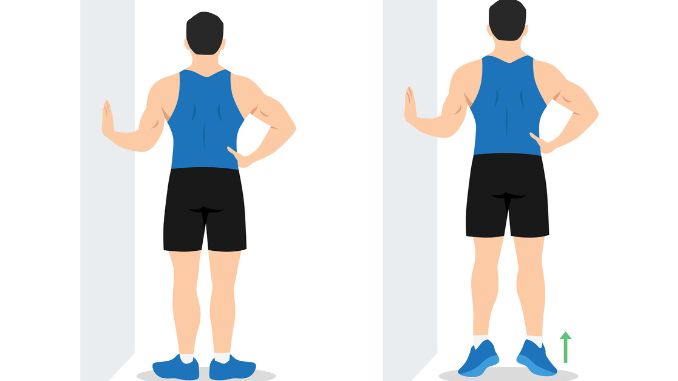
- Benefits: Strengthens calf muscles and improves balance.
- Begin in an upright standing position beside a wall with your feet hip-width apart.
- Maintain good alignment with your head, shoulders, hips, and legs.
- Position your heels almost touching each other.
- Press one hand on the wall while the other hand is placed on your hip.
- Engage your core muscles. Press from your toes to lift your heel.
- Hold the position for a few seconds.
- Lower your heels to return to the starting position and repeat the movement with 10 repetitions.
5. Single-Leg Stand
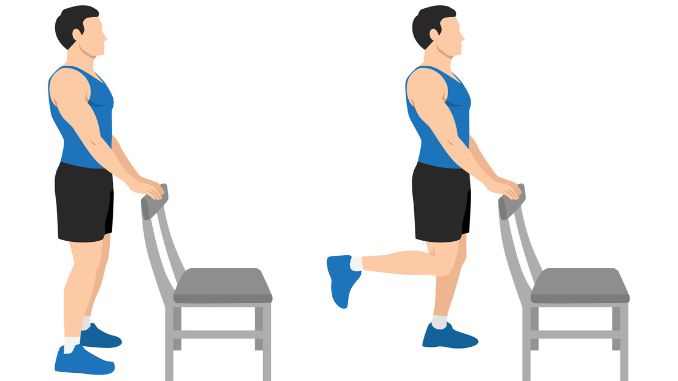
Benefits: Enhances balance and stability.
- Begin in an upright standing position in front of a chair with your feet hip-width apart.
- Maintain good alignment with your head, shoulders, hips, and legs.
- Place your hands on the backrest of the chair.
- Engage your core muscles. Bend and lift your right leg.
- Hold the position for a few seconds.
- Lower your leg to return to the starting position and repeat the movement on the opposite leg.
6. Tai Chi
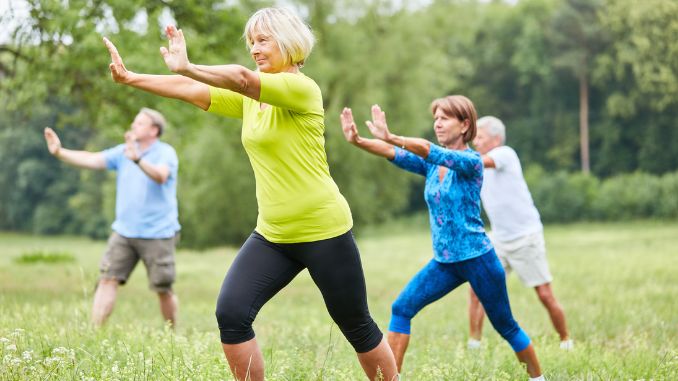
- How to do it: Join a local Tai Chi class or follow online videos. Focus on slow, controlled movements.
- Benefits: Improves balance, flexibility, and strength.
Conclusion
By understanding the most common causes of falls in the elderly and incorporating simple exercises into daily routines, elderly individuals can significantly reduce their risk of falling. Staying active not only enhances physical capabilities but also boosts confidence and overall well-being. Encourage loved ones to prioritize their safety and health by engaging in these beneficial activities.
FAQ’s
What are the most common causes of falls in the elderly?
Falls in the elderly can be caused by several factors, including environmental hazards (such as wet floors or loose rugs), muscle weakness, balance issues, vision impairments, medication side effects, chronic health conditions, and even the fear of falling.
How can environmental hazards be minimized to prevent falls?
To minimize environmental hazards, ensure that living spaces are well-lit, floors are dry and non-slippery, rugs are securely fastened, and walkways are clear of clutter. Regularly check for and address any potential hazards in the home.
What role do medications play in increasing the risk of falls?
Certain medications can cause side effects like dizziness, drowsiness, or confusion, which can increase the risk of falls. Regularly reviewing medications with a healthcare provider can help identify and manage these side effects.
What types of exercises are recommended to prevent falls?
Exercises that strengthen muscles, improve balance, and enhance coordination are highly recommended. These include chair stands, heel-to-toe walks, wall push-ups, calf raises, single-leg stands, and Tai Chi.
How does fear of falling contribute to the risk of falls?
The fear of falling can lead to reduced activity, which in turn causes decreased strength and balance. This creates a cycle where the fear itself increases the likelihood of falls. Encouraging regular physical activity can help break this cycle and reduce the risk.


